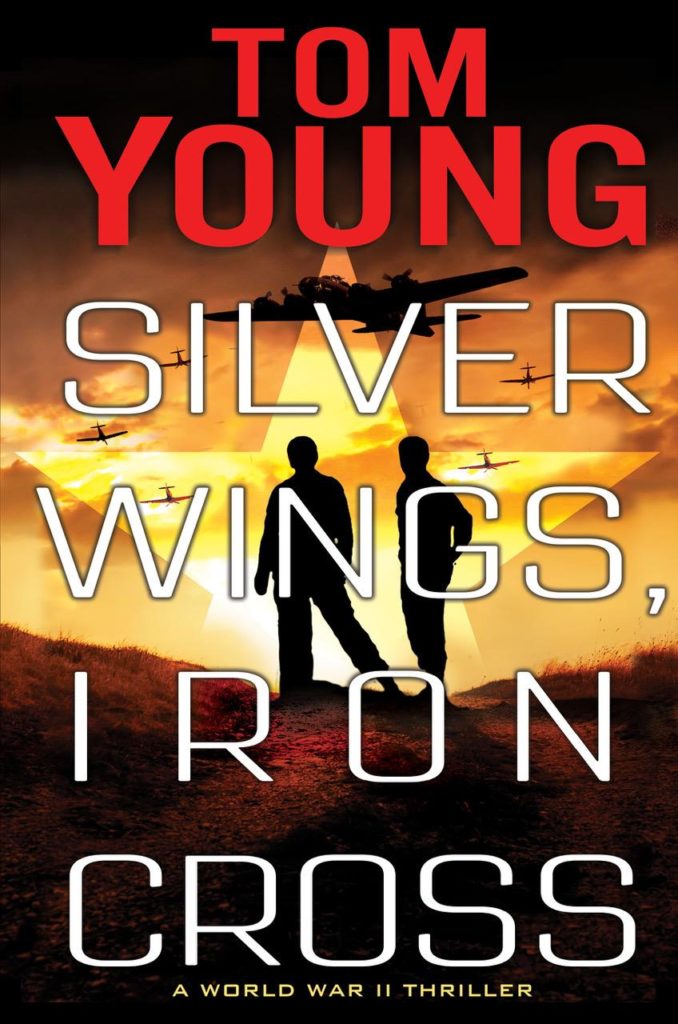Silver Wings, Iron Cross
 Buy the Book: Amazon, Apple Books, Barnes & Noble, Bookshop, IndieBound
Buy the Book: Amazon, Apple Books, Barnes & Noble, Bookshop, IndieBoundPublished by: Kensington
Release Date: May 26, 2020
ISBN13: 978-1496730459
Overview
From air combat veteran Tom Young comes the explosive saga of two enemy combatants—an American pilot and German U-boat officer —united by fate in an epic fight for survival . . .
World War II Lieutenant Karl Hagan earned his wings the hard way. But when his plane is shot down behind enemy lines, he’s forced to make the hardest decision of his life: trusting the enemy.
Oberleutnant Wilhelm Albrecht wore his Iron Cross with pride. But when his U-boat is attacked in a devastating air raid, he abandons ship and finds an unlikely ally: the pilot who bombed him.
From the smoke-filled skies over Europe to the fire-blasted waters of a Nazi naval base to the battle-scarred German countryside, the American and the German must form an uneasy truce if they hope to survive. It is November of 1944. The tides of war have turned. Allies have taken back France, and German troops have retreated. But for Karl and Wilhelm, the war is far from over. Each must be prepared to lie for the other, fight for the other, or die with the other. But their short-lived alliance won’t truly be put to the test until they reach the end of the line—inside a POW camp . . .
Thrillingly tense, blisteringly authentic, and emotionally powerful, Silver Wings, Iron Cross is an unforgettable novel of World War II that’s sure to become a classic in the field.
Video
| Excerpt from SILVER WINGS, IRON CROSS:
In the distance, the fighters began to turn. As they banked, Karl recognized them as Focke-Wulf 190s. That angle revealed the Balkenkreuz markings—the black crosses on the fuselages and wings. The 190s also bore swastikas on their vertical stabilizers. Each fighter carried a pair of machine guns synchronized to fire through the propeller arc, along with twenty-millimeter cannons mounted in the wings. According to Eighth Air Force intel reports, German pilots nicknamed the Fw 190 the “Butcher Bird.” “Anybody see any friendlies?” Adrian asked. “Negative,” Fairburn called from the top turret. “Wait,” Anders responded from the tail gun. “I got four Mustangs coming down from five o’clock high.” “How far out are they?” Karl asked. “I don’t know,” Anders said. “Maybe four miles.” The 190s were closer, and they continued to turn. In a few seconds, the attack would begin. Karl could almost sense his gunners watching the Butcher Birds through their sights. He prayed the Mustangs would intercept the enemy planes in time. Karl’s oxygen regulator blinked black and white faster and faster as he breathed more rapidly. Flying Fortresses had a reputation for being hard to shoot down, so the Germans tended to concentrate their fire toward the flight deck. Though Karl had always considered himself a strong man, at the moment he felt frail and squishy. In the cockpits of those 190s, drawing closer by the second, sat highly skilled and motivated young men determined to put sharp, hot metal through Karl’s body. The Butcher Birds banked more steeply, maneuvering in front of the B-17s. “They’re at twelve o’clock and closing,” Karl said. Tried to keep his voice as even as possible. From above Hellstorm, the Mustangs appeared in Karl’s field of view. They dived and turned to meet the 190s. Tracers began spitting from their wings. Some of the Butcher Birds turned to engage the Mustangs. But others held course and pressed their attack. The oncoming Butcher Birds grew larger in the windscreen. Some aircraft veered to hit other bombers in the scattered formation, but one bored directly at Hellstorm. Flashes began to blink on the leading edges of its wings: cannon fire. Karl banked to begin an evasive turn, but it was a token effort. The Fort could never outmaneuver a fighter. With a mere flick of its ailerons, the German aircraft stayed on Hellstorm and closed fast. |
||